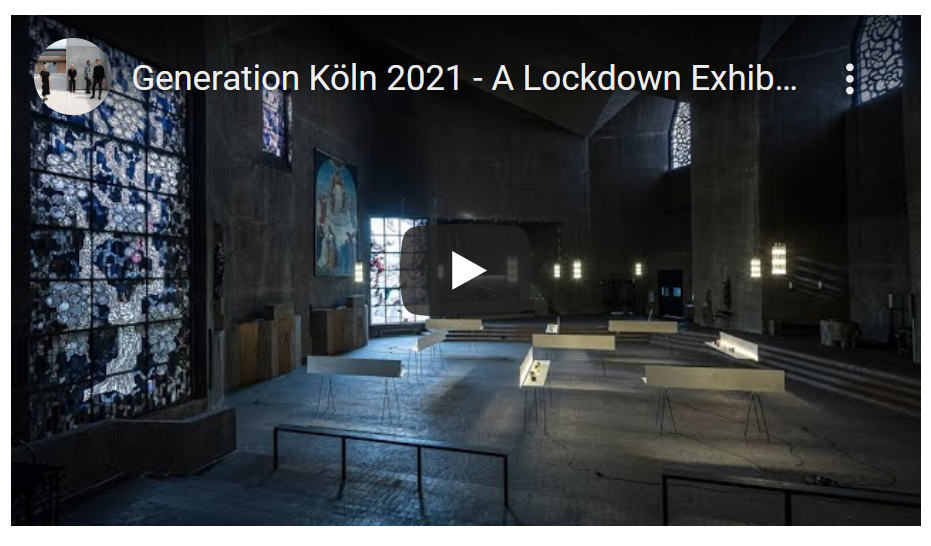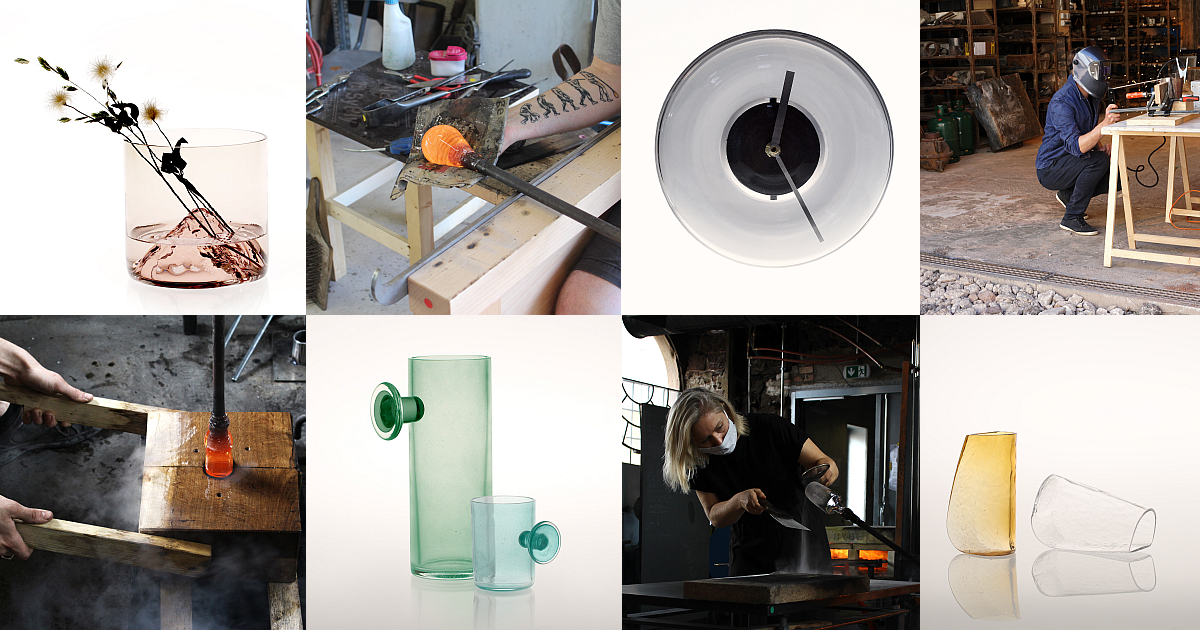Generation Köln x CIAV Meisenthal – The Film
For popularly understood reasons not only did the 2021 edition of the IMM Cologne furniture trade fair not take place as planned in mid-January, neither did the 2021 edition of Cologne’s Passagen Interior Design Week…..
….which doesn’t mean that fresh contemporary design wasn’t to be found in Cologne in mid-January.
In an offline realised and online presented exhibition the assemblage Generation Köln introduced the results of their collaborations with the CIAV Meisenthal glassworks; a virtual exhibition, and very much hands-on project, that can now be explored via a short film……
Inaugurated in 2017 as a platform for presenting contemporary designers from/associated with Cologne, Generation Köln has evolved into a…. not a group, not a collective, not a brand …… an assemblage, a lose assemblage, a lose symbiotic assemblage of the Cologne-ish designers Karoline Fesser, Tim Kerp, Thomas Schnur and Klemens Grund; and has evolved from a presentation of projects into an annual project in which the four cooperate with craft producers, or perhaps better put, an annual project undertaken in cooperation with craft producers in which the four not only develop objects but also explore and experiment with materials and craft processes in context of their understandings of and positions to design, individually and as a symbiotic assemblage. In the course of 2019 that cooperation was with carpenters in Austria’s Bregenzerwald, and in 2020 with glassmakers at le Centre International d’Art Verrier, CIAV, in Meisenthal, eastern France.
Established in 1992 CIAV has its origins in La Verrerie de Meisenthal, a glassworks established in 1704 as a manufacturer of utilitarian everyday glass objects and which achieved an international fame in the 19th century when that Grand Doyen of French Art Nouveau Emile Gallé employed the local skills and expertise of the Meisenthal verriers/verrières to assist him in his developments of decorative glassware; and a glassworks that closed in 1969 as its craft based production became unsustainable in the brave new industrialised consumer world. Or put another way, that which had allowed it to achieve an international fame, was its downfall. Which, yes, could be a metaphor.
In 1978 the former glass factory became a glass museum, and from which CIAV arose; less as a historical re-enactment and much more with the intention of not just reviving craft glass production in the region but for all as a location for the development and evolution of the glassmaking craft in contemporary contexts, if one so will a continuation of that experimentation Emile Gallé had begun a century and a bit previously. And an understanding of itself which, and as we noted from the exhibition Le Feu Sacré at Milan 2014, has seen CIAV often stand as partner for international designers of varying ilks looking to experiment with and develop their own understandings of glass and also to explore the possibilities of the glassmakers craft. Cooperations of which, as we opined from Le Feu Sacré, often produce results which may “have no future as mass market products. But all contain research and experimentation that can be used elsewhere”; and the inherent long-term value of such research and experimentation is inarguably just as important as any object that may arise from such a cooperation, and that not only for the designers and the craftfolks, but also for the development, vitality and relevance of glass and glassware, both decorative and utilitarian.
We understand Generation Köln x CIAV Meisenthal similarly; while several of the objects have unquestionably stimulated our curiosity and strike us as being deserving of a place in a commercial portfolio, of equal importance is what the four learned from the experience, and what they left in Meisenthal. In addition, and as we noted from the presentation of Generation Köln trifft Bregenzerwald, such projects/exhibitions also help underscore that a designer isn’t a lone creative force producing work from thin air, but that design, or more accurately the realisation of design concepts, is a cooperative process involving a range of actors, and that in many regards the designers job is to bring that myriad varying inputs together and transform them into a coherent, meaningful, engaging object/system. And better understanding the role and function of a designer is imperative to better understanding design.
That we haven’t actually seen any of the actual objects developed by the quartet in cooperation with the glassmakers of Meisenthal, and as a matter of principle never discuss objects we’ve not had the opportunity to get to know personally, we’ll save our reflections on the works developed by Karoline, Tim, Thomas and Klemens until such time as we can conscientiously and responsibly once again visit Cologne. Or until the exhibition gets the public airing it deserves, potentially at some design fair/week this coming autumn… all going well. Until then we recommend here a short film that not only takes you to the exhibition in the ever joyous and restorative Kirche St. Gertrud, Cologne but also takes you to Meisenthal, to selected objects arising from the project, to the development of the objects and to Karoline, Thomas, Klemens and Tim’s reflections and considerations on the development of the objects and the project…..
Full details on Generation Köln can be found collectively at www.generation-koeln.de and individually at www.karolinefesser.de, www.klemensgrund.de, www.tim-kerp.de and www.thomasschnur.com

Film opens in new tab/window, in German with English subtitles. (When we first watched it we forgot we had the album Traumresisen – Dream Trips – by Michael Rother playing in the background, and the combination worked really well, and struck us as appropriate, not just aesthetically, but also formally and figuratively…..but that’s optional)
Tagged with: CIAV Meisenthal, cologne, Generation Köln, Generation Köln x CIAV Meisenthal, glass, Karoline Fesser, Klemens Grund, köln, Meisenthal International Glass Art Centre, Passagen Cologne, Thomas Schnur, Tim Kerp
